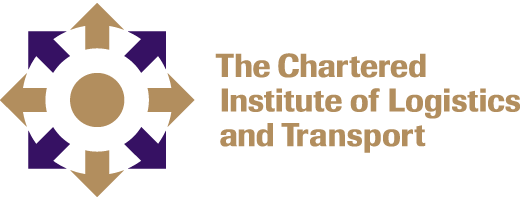A Study on Externally Driven Costs for Road Freight Transportation in Zimbabwe
Abstract—
The purpose of the study was to assess how external costs impacted on the overall performance of road freight transport sector in Zimbabwe. Both internal and external dynamics play a huge role on the decisions made by operators and mangers in freight transport business. Freight transport is key to socioeconomic development of a country and hence there is need to scrutinize how external costs impact on the performance of such entities. This was a quantitative study of road freight transport sector across Zimbabwe with a population of 1256 registered companies and a randomly picked sample size of 384. A total of 384 questionnaires were distributed and 291 were retrieved giving a response rate of 75.6%. study found out that external costs such as accidents, traffic congestion and environmental pollution, if go unchecked have a huge impact on profitability margins due to fines for non-compliance, compensation and insurance costs. The study recommends development of a company policy document that would outline the scope and actions to be taken to ameliorate the negative impact of external costs on business performance.
1. Introduction
There is a general consensus among scholars that external costs (such as accidents, traffic congestion and environmental pollution) positively influence competitiveness of firms in the road freight sector [1]; [2]; [3]. Ref. [4] studied the external costs of transport in the United States and found that the highest external costs in road transport are accidents and congestion, air pollution and climate change. This supported by the [5] which pointed out that road accidents are a leading cause of death in road transport. Ref. [6] blamed transport companies for a number of accidents as they force drivers resulting in high driver fatigue. On the other hand, [7] observed that the major causes of accidents in the freight industry are amongst young age profiles and recently employed drivers compared to experienced ones. Ref. [8] revealed that accidents have affected the reputation and profitability levels of firms in the South African road freight sector. Correspondingly findings by [9] shows that road freight industry in Malawi is growing at a slow pace due the inability to effectively train driver training on the various ways to avoid road accidents. On the other hand, [10] revealed that the competitiveness of the road freight sector in most SADC countries is undermined by huge delays at border posts, immense driver fatigue and accidents. Other scholars have cited traffic congestion as one of the key issues undermining the competitiveness of the road freight sector. The effect of congestion to a shipper means longer travel times, decrease in vehicle utilization, decreased in fuel efficiency higher cost of fleet operation, shrink in market coverage, higher cost of shipment, less reliable pickup and delivery times for truck operators [11]. Ref. [12] have observed that road freight should account for external costs such as maintenance costs on roads and bridges, delays caused by traffic congestion, injuries, fatalities and property damage from accidents to remain competitive. A sizeable number of studies have exposed that the increased volume of haulage trucks on the road has increased the environmental impact in terms of greenhouse gas emissions. Ref. [13]; [14] and [15] have observed that environmental pollution damages the corporate reputation and undermines the company’s green image. Ref. [16], (2016) indicated that greening fleet management practices play a crucial role in reducing environmental pollution and improving the economic performance of an organisation. Similarly, [17] revealed that the reduction of emissions and fuel consumption by players in the road freight transport sector positively impact on the firm profitability. This is echoed by [18] who posited that companies that use well maintained clean or fuel-efficient vehicles that do not leak fluids like fuel, oil and gas are able to prolong the life of their vehicles, reduce accident rates, reduce environmental damage, reduce number of costly lawsuits a reduced vehicle operating expenditure which all contributes to improved firm competitiveness.
2. Literature Review
Freight transport provides societal benefits but also generates costs. The sum of the private and external costs of transport corresponds to the total or social cost of transport [19]. Private (operational or internal) costs refer to the costs that an economic agent must support to perform his activities. External costs are side effects of transport and, “without policy intervention they are not taken into account by the transport users” [20]. External costs should be considered in transport pricing policies [5]. External costs consist in five main categories: global warming, air pollution, noise, accidents, and congestion. External costs are not easy to evaluate and to monetize. Indeed, it is difficult to measure physically the damage because the scope of the externality is not totally known, the effect is uncertain and can vary a lot from an individual to another, and externalities happen with different time horizons. Moreover, for most externalities, there are no markets on which they can be exchanged at a commercial value [21]. Competitiveness is defined as a sector’s or firm’s ability to compete by trading its products profitably in the global marketplace while earning at least the opportunity to meet the cost of returns on resources employed [22]. In the same way, [23] defined competitiveness as the success or effectiveness of an organization emanating from its ability to perform well and effectively achieving its objectives successfully. Ref. [22] believes that every company has a competitive strategy, either it is official or unofficial to the market. Ref. [24] observed that competitiveness is achieved when a firm is able to evaluating its strengths and weaknesses and compare them to those of its competitors. This supported by [25] who stated that to realize a commanding competitive leverage an organization should do a comparative to the others in the same businesses. Ref. [26] observed that trucking business competitiveness is limited by high costs that characterize this sector as profitability in this sector is dependent upon operating costs and freight rates that are governed by demand of such trucking services. This is also supported by Ref. [27] which posits that freight rates are determined by the frequency of haulage trips and the utilization of such trucks by the haulage business players. Ref. [22] adds that a competitive advantage exists when the organisation can deliver the same benefits as competitors but at a lower cost (cost advantage) or deliver benefits that exceeds those of competing products (differentiation advantage). A competitive advantage therefore enables an organisation to create superior value for its customers and superior profits for itself. The nature of the road freight transport sector business of low entry costs but high operational costs make it vulnerable to intense competition, great business failure rate and significant driver turnover. It has been established that transportation-related emissions of harmful compounds into the atmosphere contribute to an increase in the number of civilization diseases such as respiratory, cardiovascular, and diseases, and cancer [36]. Freight has also become a source of contamination in the natural environment. Removal of unfavourable environmental changes contributes to the generation of significant environmental costs.
3. Research Methodology
The study was guided by a positivism philosophy to spot patterns and make logical deductions. Positivism is based on measurement, control, and systematic observation [28]; [29]. The researchers’ main objective was to establish the influence of transport costing on competitiveness of firms in the road freight sector in Zimbabwe. This was a case study of 1256 registered road freight companies in Zimbabwe with Harare as the main hub for their operations. Quantitative research strategy helped researchers in analysing data in a formal and systematic manner [30]. To obtain a deep understanding of current reality, researchers constructed a model or prototype depicting the requirements, activities, parameters, costs, and organisational processes desirable for the success of the transport costing philosophy in road freight transport sector [31]; [ 30]. The study adopted a cross-sectional survey design because it allowed researchers to use large samples hence the study’s sample size was 384 large enough for crosssectional survey to be employed. Additionally, cross-sectional design allowed for a large amount of data to be collected once over a short period of time giving room for the measurement of relationships grounded on the study’s hypotheses [32]. Sample size was randomly determined from a population of 1256 registered road freight companies in Zimbabwe. The sample size for this study was determined using the formulae proposed by Krejcie and Morgan (1970). S = X²NP(1 − P) d 2(N − 1) + X²P(1 − P) Where: 𝐱 𝟐 = the table value of chi-square for one degree of freedom at the desired confidence level (3.841). N = the population size. P = the population proportion (assumed to be 0.50 since this would be the maximum sample size); and d = the degree of accuracy expressed as a proportion (0.05) Conferring to Krejcie and Morgan’s (1970) formula the sample size for this study was 384 households at 95% confidence level. The sample size obtained was consistent with the principle that the sample should be at least 200 to meet the requirements of Maximum Likelihood Estimation [33]. Additionally, the sample size of 384 was also justified following the recommendations by [34] that a minimum sample size of 200 is required to allow statistical analyses such as factor extraction which was performed in this study. Furthermore, the Kaiser-Meyer-Olkin Measure of Sampling Adequacy (KMO) was done, and the sample was found to be statistically significant for each of the construct under investigation in the study [34].
4. Conclusion and Implications
The first objective sought to establish the influence of external costs on firm competitiveness. There is sufficient evidence from the findings and interpretation of the results to suggest that external costs such as accidents, congestion and pollution positively influences firm competitiveness. The implication is that a reduction in external costs by firms in the road freight sector results in increased profitability, improved marked share, improved customer satisfaction and improve company reputation. Ref [35] opined that, knowledge management concept worked in a holistic manner that incorporates and integrate within the business environment. In the same way [35] emphasised that using a specific idea of resources would improve the supply chain connectivity and network where there is a possibility of reducing supply chain cost.
5. Acknowledgements
The researcher acknowledges the support from the faculty of Entrepreneurship and business school of Chinhoyi University of Technology. Special thanks go to Prof M Tukuta and Prof M Tsvere. References [1] Santos, T.A., Ramalho, M.M., & Soares, C. Guedes (2021). Assessment of external costs of transportation using transport network models. 2021 6th International Conference on Transportation Information and Safety (ICTIS), IEEE, https://doi.org/10.1109/ictis54573.2021.979 8686
[2] Mostert M, Caris A, Limbourg S. Road and intermodal transport performance: the impact of operational costs and air pollution external costs. Res Transp Bus Manag. 2017;23:75– 85.
[3] Kelle P, Song J, Jin M, et al. Evaluation of operational and environmental sustainability trade offs in multimodal freight transportation planning. Int J Prod Econ. 2019;209:411–420.
[4] Delucchi, Mark A., James J. Murphy, and Donald R. McCubbin (2013). “The Health and Visibility Cost of Air Pollution: A Comparison of Estimation Methods,” Journal of Environmental Management, 64, 139-152.
[5] European Road Safety Observatory (2015)
[6] Muviringi, M.P. 2012. Road Traffic Accidents in Zimbabwe, Influencing Factors, Impacts and Strategies. Unpublished Masters of Public Health Thesis. Amsterdam, Vrije University
[7] Regev, S; Rolison, JJ; Moutari, S; (2018) Crash risk by driver age, gender, and time of day using a new exposure methodology. Journal of Safety Research, 66 pp. 131- 140. 10.1016/j.jsr.2018.07.002.
[8] De Haven H. Mechanical analysis of survival in falls from heights of fifty to one hundred and fifty feet. 1942. Inj Prev. 2000;6(1):62– 68. [PMC free article] [PubMed] [Google Scholar]
[9] Hanif, R, & Kaluwa, E. (2016). Analysis of transport logistics challenges affecting freight forwarding operations in Malawi. African Journal of Business Management, 10(24), 607-614.
[10] Khumalo, S. 2013. Lessons from history on how to overcome institutional, political and infrastructural cross border transport challenges, Finland
[11] Fadare, S., Ayantoyinbo, B. B. (2010) A Study of the Effects of Road Traffic Congestion on Freight Movement in Lagos Metropolis. European Journal of Social Sciences – Volume 16, Number 3, pp. 429 – 437
[12] Austin, D. (2019). Accounting for External Costs in Freight Transport. U.S. Freight Rail Economics and Policy, 81-113, Routledge, https://doi.org/10.4324/9780429031120-4 [
13] Bloemhof, J. M., and J. A. E. E. van Nunen. 2008. “Integration of Environmental Management and Supply Chain Management.” Chap. 4 in Green Marketing Strategies, edited by A. Ghose, 49–68. Hyderabad: The ICFAI University Press.
[14] Evangelista, P., & Colicchia, C., & Creazza, A. (2017). Is environmental sustainability a strategic priority for logistics service providers?. Journal of environmental management, 198, 353-362.
[15] Perotti, S., Prataviera, L.B. and Melacini, M. (2022), “Assessing the environmental impact of logistics sites through CO2eq footprint computation”, Business Strategy and the Environment, Vol. 31 No. 4, pp. 1679-1694.
[16] Cargo Beamer. 2017. Pdf file. Retrieved from https://www.cargobeamer.eu/CargoBeamerOverview-pdf-851154.pdf
[17] Haddad M, Behm D, Tebben M, Chamari K. (2017), Monitoring training load, recovery, overtraining and upper respiratory infection in taekwondo. In: Haddad M, ed. Performance Optimization in Taekwondo: From Laboratory to Field. Henderson, NV: OMICS Group International. In press.
[18] Kazancoglu, Y., Kazancoglu, I., & Sagnak, M. (2018). Fuzzy MEDMATEL-based green supply chain management performance: an application in cement industry. Industrial Management and Data Systems, 118 (2), 412- 431.
[19] Arthur Cecil Pigou, The Economics of Welfare [1920], Online Library of Liberty web site http://oll.libertyfund.org,
[20] M. Maibach, C. Schreyer, C. Schneider, M. Herry, et al. INFRAS ; Herry Consulting External costs of transport in Central and Eastern Europe, for the OECD Environment Directorate, Working Party on National Environmental Policy, Working Group on Transport Zurich/ Wien : 2003
[21] Nayes, E., & Arnold, P. (2010). Evaluation des coûts externes liés au transport en Région Wallonne. Namur: Direction générale opérationnelle de l’agriculture, des ressources naturelles et de l’environnement.
[22] Porter, M. (1998) The Competitive Advantage of Nations. Macmillan Business, 33.
[23] Jenatabadi, H. S. (2015). An Overview of Organizational Performance Index: Definitions and Measurements. SSRN Electronic Journal. https://doi.org/10.2139/ssrn.2599439
[24] Afande, F. O., Ratemo, B. M., & Nyaribo, F. N. (2015). Adoption of supply chain management zpractices: Review of determining factors. Innovative Systems Design and Engineering, 6(5), 72 -77
[25] Raduan Che Rose, Jegak Uli and Haslinda Abdullah. Asian Academy of Management Journal, Vol. 17, No. 1, 151 –173, January 2012
[26] Zereilli, S & Cook, A 2010, ‘Trucking TO West Africa’s Landlocked Countries: Market Structure AndConducT’, Trade Hub Technical Report, 32, USAID.
[27] The International Institute for Sustainable Development (2021)
[28] Peter M. Pruzan’s ‘Research methodology: The aims, practices and ethics of science’. Journal of Research Practice , 13(1), Article R1. Retrieved from http://jrp.icaap.org/index.php/jrp/article /view/573/471
[29] Leavy, P. (2017). Research Design: Quantitative, Qualitative, Mixed Methods, Arts -Based, and Community -Based Participatory Research Approaches. New York, NY: The Guilford Press. ISBN 9781462514380. 300 pp.
[30] Creswell, J. W. (2014). Research Design: Qualitative, Quantitative and Mixed Methods Approaches (4th ed.). Thousand Oaks, CA: Sage.
[31] Ralph, Paul & Yair Wand. 2009. A proposal for a formal defition of the design concept. In KalleLyytinen, Pericles Loucopoubs, John Mylopoulos & Bill Robinson (eds.), Design requirements engineering: A ten -year perspective (LNBIP 14), 103 –136. Berlin: Springer -Verlag.
[32] De Vaus, D. A. (2014). Surveys in Social Research. (6th ed). Australia: UCL Press.
[33] Hair, J.F., Jr, Hult, G.T.M., Ringle, C. and Sarstedt, M. (2016), A Primer on Partial Least Squares Structural Equation Modeling (PLS – SEM), Sage Publications, London.
[34] Field, A. (2005). Di scovering statistics using SPSS (2nd ed.). London: Sage.
[35] Mohan Selvaraju, Prashanth Beleya, Veera Pandiyan Kaliani Sundram . Supply Chain Cost Reduction using Mitigation & Resilient Strategies in the Hypermarket Retail Business. International Journal of Supply Chain Management. Vol. 6, No. 2, June 2017



